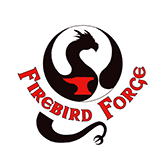Techniques in Blacksmithing
Blacksmithing Techniques
Although I have carried out commissions using modern techniques of metal fabrication, I am primarily a traditional blacksmith. This means, that virtually all of my work is produced by heating the component parts in a coal fire and then using my skills to hammer the metal into the desired shape.
This technique allows each piece to become unique in the same way that no two hand drawn pictures are the same, each will have subtle differences. You can go further with this analogy and compare a steel fabricators work with a mass produced computer image or logo, whereas a blacksmiths work is more akin to an original oil painting.
The main techniques of blacksmithing share many similarities with traditional carpentry. We often use tennon joints to join items of ironwork and the function of rivets share the same structural purposes as wooden pegs in a timber frame. The exception is that, through the application of heat, we are able to drawn down (elongate) or upset (thicken) the metal in order to create these tennon joints. Again, using the heat from a fire, we are able to create joins in individual items of metal by firewelding. This requires heating both “billets” of steel to just below melting temperature, when the outside surface of the steel is semi molten but the interior of the billet is still solid. The two billets are then placed against each other and hammered together to allow the molten surfaces to weld together. It sounds simple but the process must be completed in a couple of seconds from leaving the fire and can take a lifetime to perfect.
Get In Touch
Address
The forge is located between Groombridge and Hartfield, close to Tunbridge Wells, in one of the oldest country estates in England. Unfortunate the forge is not open to the general public, without an appointment (sorry).
Call Us
07525 242315
Email Us
morts4@btinternet.com
